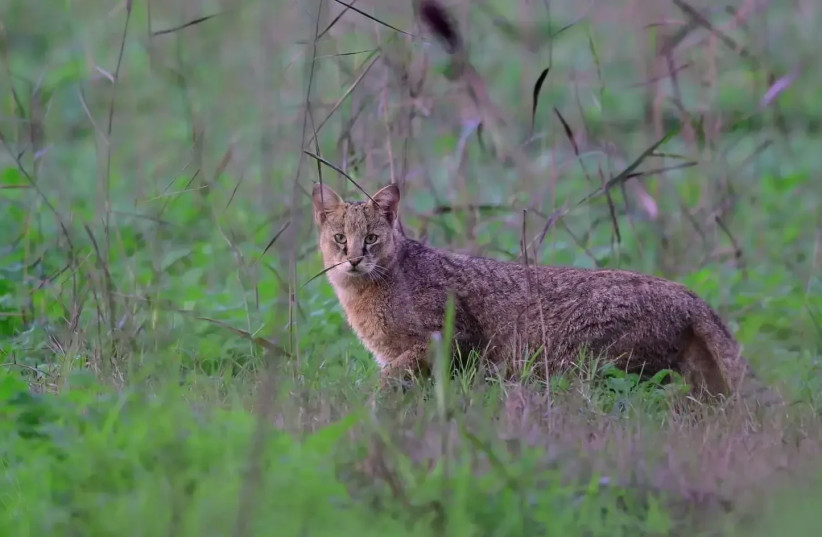Last week in the Hula Valley, Liron Shapira, a nature conservation coordinator at the Society for the Protection of Nature in Israel (SPNI) in the North, documented a swamp cat (also known as a jungle cat, reed cat, or jungle lynx) coming out at nighttime in search of prey among the valley’s reeds.
The swamp cat is one of the three remaining species of wildcats in Israel after leopards, together with caracals, went extinct.
Swamp cats are medium-sized: The female weighs 7-8 kg. and the male weighs 13-14 kg. They exist anywhere between East Asia to the Nile, with Israel being the most westbound location in which these cats can be located.
Swap cats: Cats that like the water
Unlike many other cat species, the swamp cat likes to live in a watery environment. It has adapted well to its surroundings, having short fur and relatively small feet with prominent pads, which allow it to move without slipping in mud, or move through smooth surfaces with ease, and a relatively short tail and camouflaged colors at that.
“The Hula Valley is home to many wild animals and is also the place with the largest population of swamp cats in Israel,” Shapira explained.

He added, “Monitoring and research are conducted in the valley using various methods. Notably, in the wake of the current security situation, there are few visitors in the valley; the main movement there is by farmers.”
“I wandered in these fields after several months of absence (due to reserve duty in the IDF, among other things); the feeling was strange, and the valley was so very quiet. But then, luckily enough, I had the good fortune of encountering a few swamp cats who had gone out hunting at sunset. War or no war, for them, the world just goes on as it always has, and always will.”
